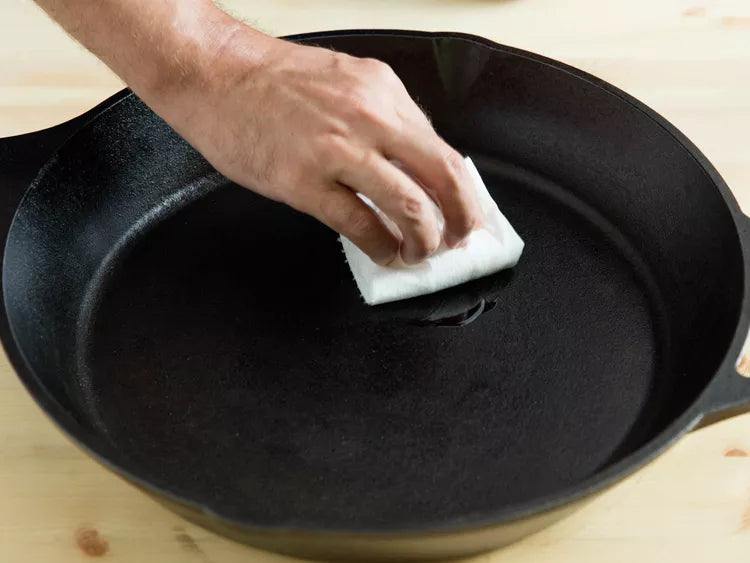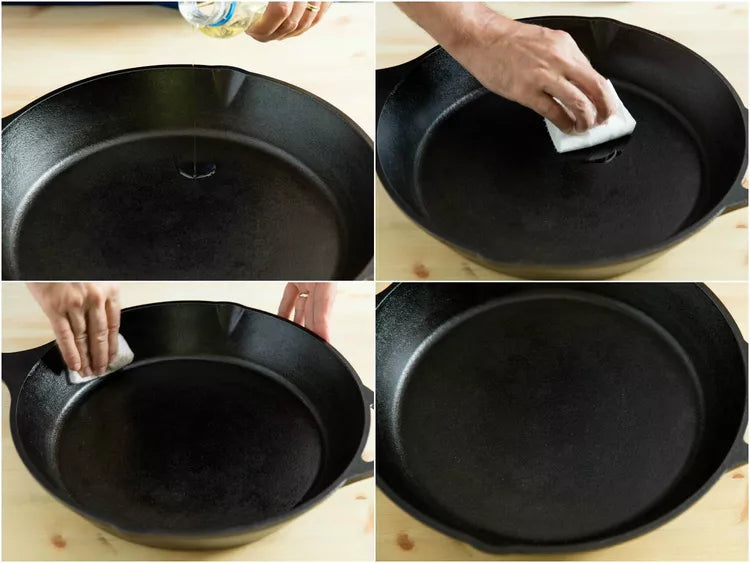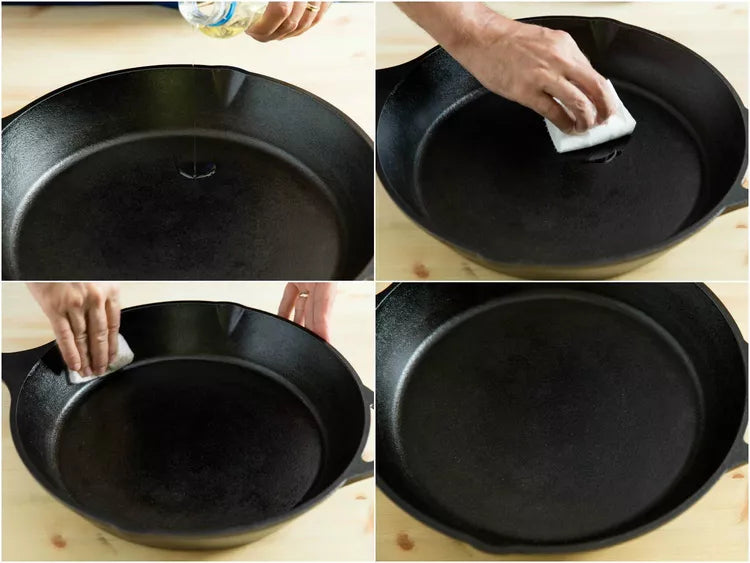Understanding how to tell if cast iron is seasoned is crucial for any kitchen professional. A well-seasoned cast iron pan is not merely a cooking vessel. It's a cornerstone of culinary art, offering non-stick properties and enhanced flavors that can elevate your dishes to an entirely new level. Knowing the state of your cast iron is essential for maintaining its quality and performance.
As we dive deeper, we will explore the characteristics of a properly seasoned cast iron and provide you with essential tips to help you distinguish between a well-seasoned pan and one that needs attention. Lets ensure youre fully equipped to take your cast iron cooking to the next level!
:max_bytes(150000):strip_icc():format(webp)/__opt__aboutcom__coeus__resources__content_migration__serious_eats__seriouseats.com__images__2016__09__20160817-cast-iron-pan-vicky-wasik-collage-1500x1125-a15711a84a054cca9268b8ddda1e5dd2.jpg)
What Does Seasoning Mean in Cast Iron?
Before discussing how to tell if cast iron is seasoned, its important to understand what seasoning actually means. Seasoning is a process whereby a layer of fat is applied to the surface of the cast iron and then heated to create a protective, non-stick coating. This not only prevents rust but also enhances the cooking performance of the vessel.
Key Characteristics of a Seasoned Cast Iron Pan
Identifying a well-seasoned cast iron pan is straightforward if you know what to look for. Here are several key characteristics:
- Color: A seasoned cast iron should appear dark brown or black. This rich color is the result of the polymerization of fats during the seasoning process.
- Smooth Texture: The surface of a properly seasoned pan should feel smooth to the touch, without any sticky or rough spots.
- Non-stick Properties: A seasoned pan should release food easily without sticking. If you notice your food sticking, it might need to be re-seasoned.
- Oily Surface: A light sheen or oily appearance is common in seasoned cast iron. It indicates that there is a layer of seasoning protecting the surface.
How to Test Your Cast Iron Seasoning
Now, lets delve into more practical ways how to tell if cast iron is seasoned:
- Water Test: Place a few drops of water on the surface. If the water beads up and rolls, your seasoning is likely intact. If it sizzles or evaporates quickly, it may need re-seasoning.
- Cooking Test: Cooking an egg can be a great test. If the egg slides off and cooks evenly without sticking, your pan is well-seasoned.
- Smell Test: A well-seasoned pan will not emit any foul odors when heated. If there's an unpleasant smell, it might indicate burnt food residue or a need for cleaning and seasoning.
Common Issues with Cast Iron Seasoning
Even the best kitchen professionals can run into problems with their cast iron. Here are some common issues and how to address them:
Sticky Residue
Sticky cast iron can be frustrating. According to an article on how to fix sticky cast iron, this can often be resolved by stripping the pan of its seasoning and starting fresh.
Pitting and Rust Formation
Pitting is a sign of corrosion, while rust indicates neglect. Use a scrubber to remove rust and re-season the pan immediately afterward.
How to Season Your Cast Iron Properly
If you find that your cast iron needs seasoning or re-seasoning, its an easy process. Heres a simplified guide for kitchen professionals:
- Start with a clean, dry skillet.
- Apply a thin layer of oil suitable for high heat points, such as flaxseed oil or grapeseed oil. The optimal oil can be found in what is the best oil to season cast iron.
- Place the pan upside down in an oven preheated to around 450F for about an hour.
- Allow it to cool completely before using it again.
Frequently Asked Questions
1. Can I use soap on my seasoned cast iron?
Although it is generally advised to avoid soap, a small amount can be used if needed. Just make sure to re-season afterward.
2. How often should I re-season my cast iron?
This can depend on usage. If you use it frequently, consider re-seasoning every few months. A test like the water test can help determine the need.
3. What temperature should I use to season my cast iron?
The ideal temperature is usually around 450F. For more detailed guidance, see this link on how to properly season cast iron.
:max_bytes(150000):strip_icc():format(webp)/__opt__aboutcom__coeus__resources__content_migration__serious_eats__seriouseats.com__images__2016__09__20160817-cast-iron-pan-vicky-wasik-3-c56f176298784fef9e60f6cea198e0e4.jpg)
Conclusion
Determining how to tell if cast iron is seasoned allows you to maintain the integrity and usability of your cookware. Remember, a well-seasoned pan can elevate your culinary creations by providing a naturally non-stick surface that enhances flavors. Should you need more details about cast iron pans, you might find this guide on distinguishing cast iron from steel invaluable.
This article contains affiliate links. We may earn a commission at no extra cost to you.






Leave a comment
This site is protected by hCaptcha and the hCaptcha Privacy Policy and Terms of Service apply.